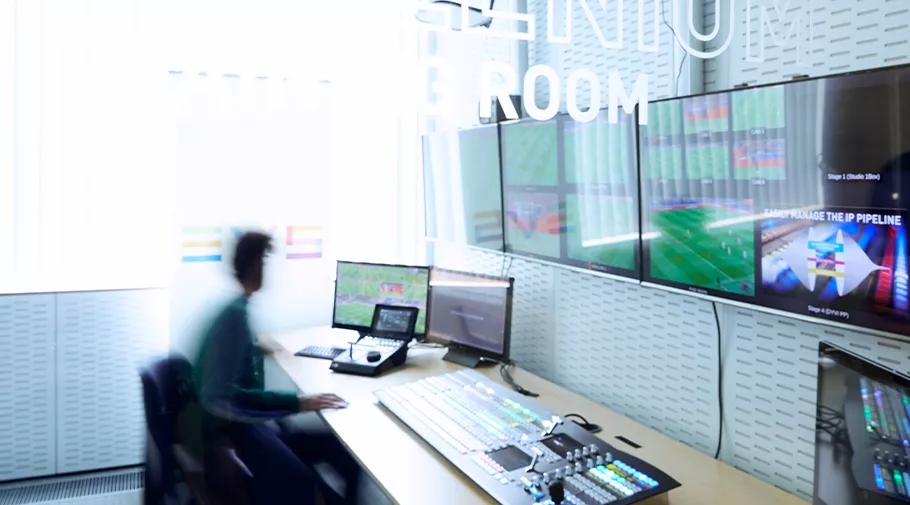Cerebrum Designer Basic Technical Training
- Type

Training details
- Product Cerebrum
- Category Infrastructure
2 days (or 4 sessions of 4h each)
English (other languages on request)
This course is meant for experienced engineers who have attended the Cerebrum Basic and Advanced training, and want to learn how to create software panels and custom workflows using Cerebrum Designer toolbox. Upon completion of this training session, the participants will have gained a deeper understanding of how to use the Designer application. They will have created their personal user interface mock-up, a working device monitoring and control user interface, a template file and a hardware router panel that can be used as a base for future designs.
Experienced Broadcast engineers seeking to expand their skill set and leverage coding principles to enhance their effectiveness in broadcast operations using the Cerebrum Designer application.
Training Format
Classroom (full days) or remote training (ILT - half days)
-
Cerebrum Basic and Advanced training
The participants should have completed the Cerebrum basic and Advanced training levels before attending the Designer Basic training sessions. -
Broadcast Engineering experience
The participants should have at least 2-3 years of experience in broadcast engineering or a related field, showing proficiency in maintaining and troubleshooting broadcast equipment and systems. -
Basic coding experience
The participants should have a basic understanding of coding principles, including variables, loops, conditionals, and functions. Familiarity with scripting languages (e.g., Python, JavaScript) and/or programming languages (e.g., C++, Java) is beneficial but not mandatory.
The Cerebrum Designer Basic training course contains the following sections:
- Cerebrum Designer application introduction
• General Designer application introduction and what it can create
• Application walk-through (menu bar, Properties windows, Toolbox, Attribute window and System view)
• Mock-up design using basic controls and configuring . Initial values
Hands-on exercise: Create a mock-up user interface
-
Drag and Drop design
• Using the System view window to navigate and select device values
• Datatype-based control logic and how to overwrite this logic
• Template arguments
• "Unfolding" templates to expose script
Hands-on exercise: Use Drag and Drop design to create a basic user interface
- Template design
• The pros and Cons of templated controls
• Creating a template file for custom design
• Setting input arguments and using them in the template
Hands-on exercise: Create a personal template file with examples to be used in designs
• The Router panel design
• Category type driven template assignment
• Fundamental router panel design structures
• Configuration of the Parent and Children subpanels
• Explain how to create a Hardware Router Panel
Hands-on exercise: Create a basic hardware & Software XY Router panel
- Basic Introduction to Events & Actions